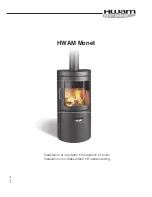
9
Record the volume filled, water hardness and pH value
on page 61.
Note
Observe the "Water quality requirements" on
page 59.
Filling the trap with water
A
B
Fig. 1
A
Trap lower section
B
Drain hose
1.
Undo the trap and fill it with water. There is a risk of
flue gas escaping if it is not filled with water prior to
commissioning.
2.
Check that the condensate can drain freely.
3.
Refit the trap.
Commissioning the system
Danger
CO build-up as a result of incorrect burner
adjustment or flue gas system leakage can have
serious health implications.
Always carry out a CO test before and after
work on gas appliances.
■
Vitotronic operating instructions and service
instructions
■
Neutralising system operating instructions
■
Flue system installation instructions
Note
To ensure stable operation, the following minimum
lengths for the flue system must be observed:
■
Natural gas E: 5 m
■
LPG P: 10 m
0
1.
Check the heating system pressure.
Permiss. operating
pressure
6 bar (0.6 MPa)
Minimum operating
pressure
0.5 bar (50 kPa)
Danger
If the operating pressure is too low, excess
temperatures in the flue system can cause
leaks. Escaping flue gas can cause life
threatening carbon monoxide poisoning.
Ensure the minimum operating pressure
with a minimum pressure switch.
0
2.
For open flue operation: Check that the ventilation
facility in the installation room is open.
Commissioning, inspection, maintenance
Filling the heating system with water and venting
5816717










































